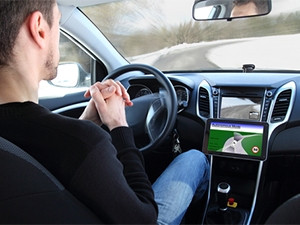
Fully autonomous cars are said to become mainstream within the decade; however, drivers may not be ready to give up the wheel when the time comes.
Research firm ReportLinker conducted an online survey and interviews last month to gauge drivers' sentiment towards the imminent self-driving future.
Key results showed 60% of respondents were somewhat or very positive about autonomous cars, but a large majority are still passionate about cars and driving. However, most (72%) would be willing to consider the idea if their concerns were addressed. The main concern about self-driving cars was safety, with 63% saying they won't feel safe.
To overcome this fear, respondents said introducing automated features in traditional cars could help.
Mobility company Ford is already taking this approach. It said earlier this month it intends to produce high-volume fully-autonomous vehicles by 2021. But the company is taking it step-by-step and has already incorporated some of the technology it will use in mainstream autonomous cars, into its current line-up.
On the other end of the scale, Tesla recently announced all new Tesla Motors models will come with hardware to enable them to be fully self-driving. South African-born CEO Elon Musk said he expects that by the end of 2017, a Tesla would be able to drive in full autonomous mode from Los Angeles to New York "without the need for a single touch" on the wheel.
Ford and Tesla's claims are bolstered by a report from research firm Berg Insight, which predicts the first autonomous cars will debut in 2020.
The firm says new registrations of autonomous cars will have grown at a compound annual growth rate of 62% from 0.2 million units in 2020, to reach 24 million units 10 years later.
Share